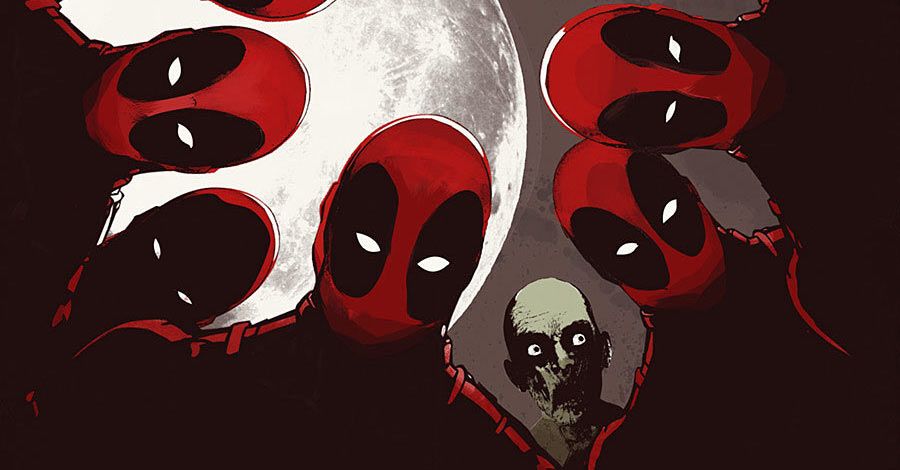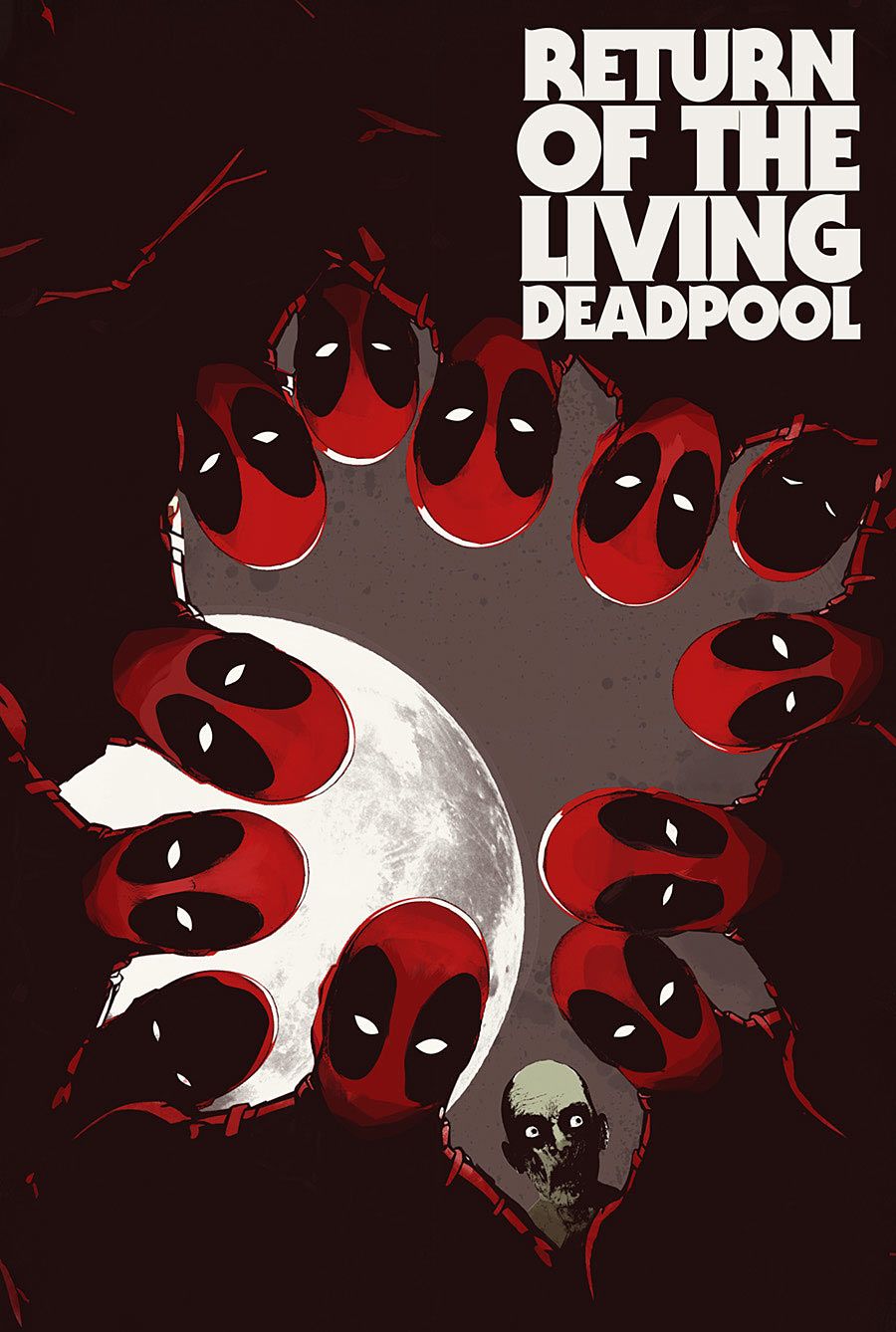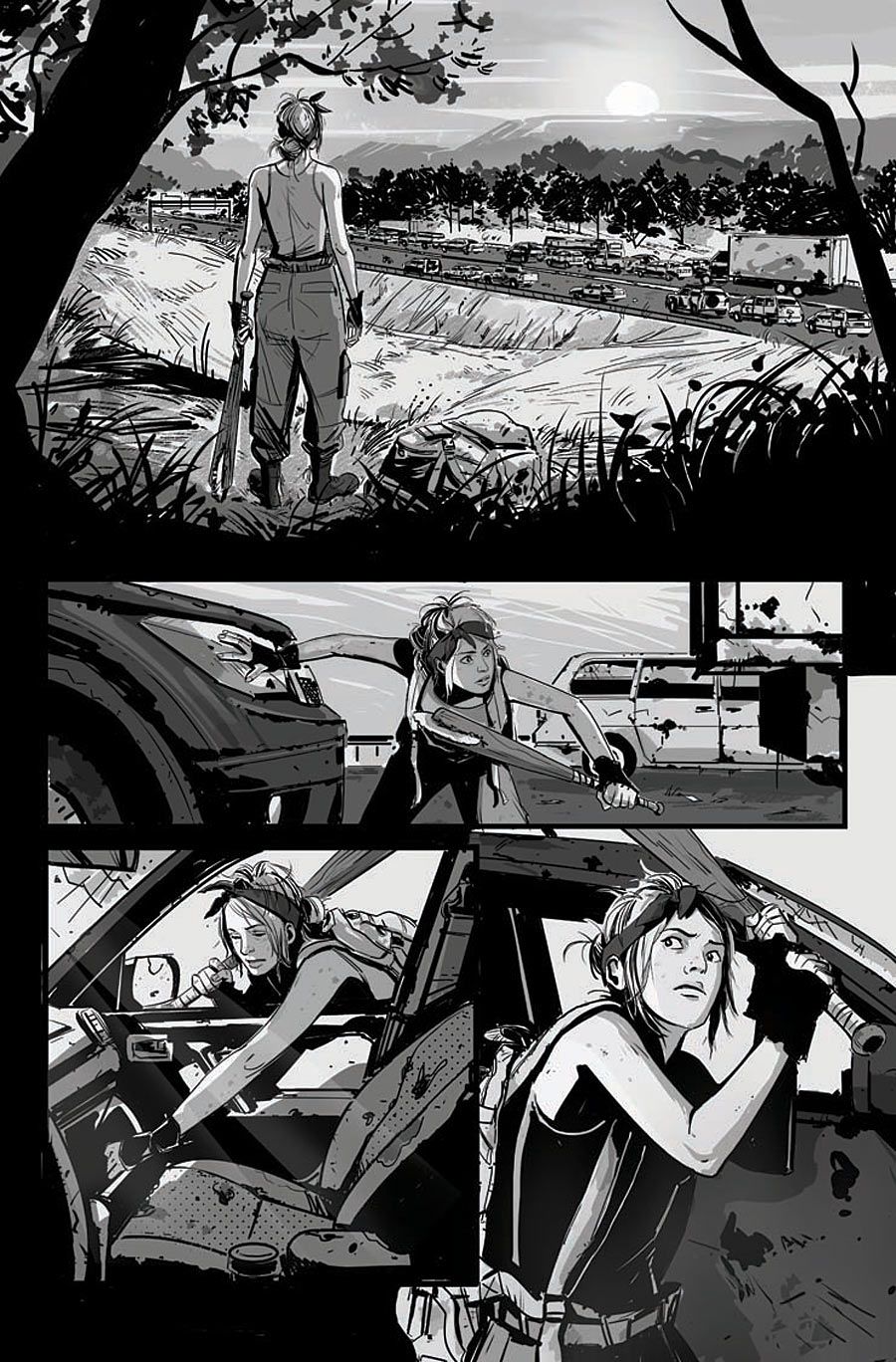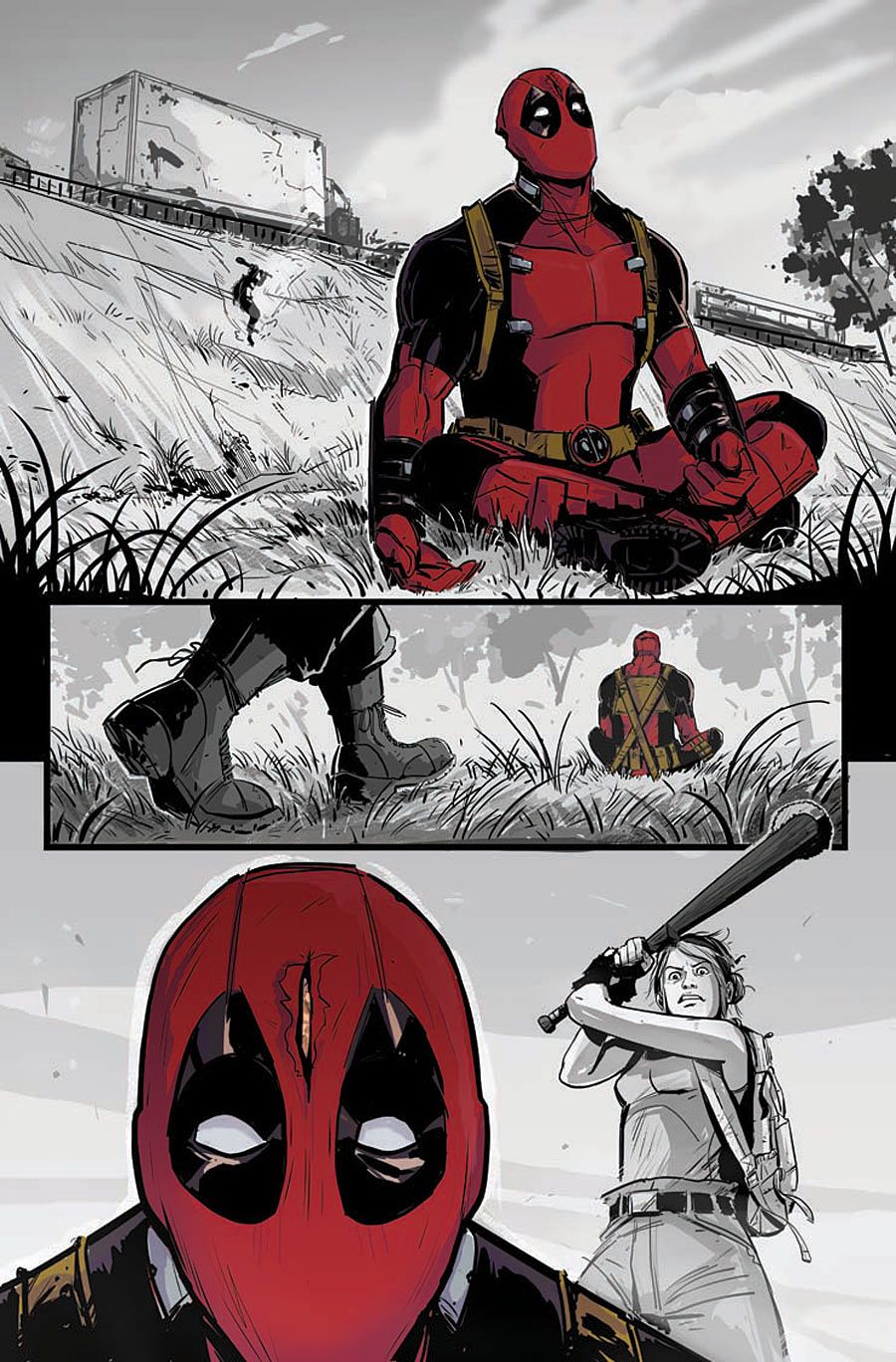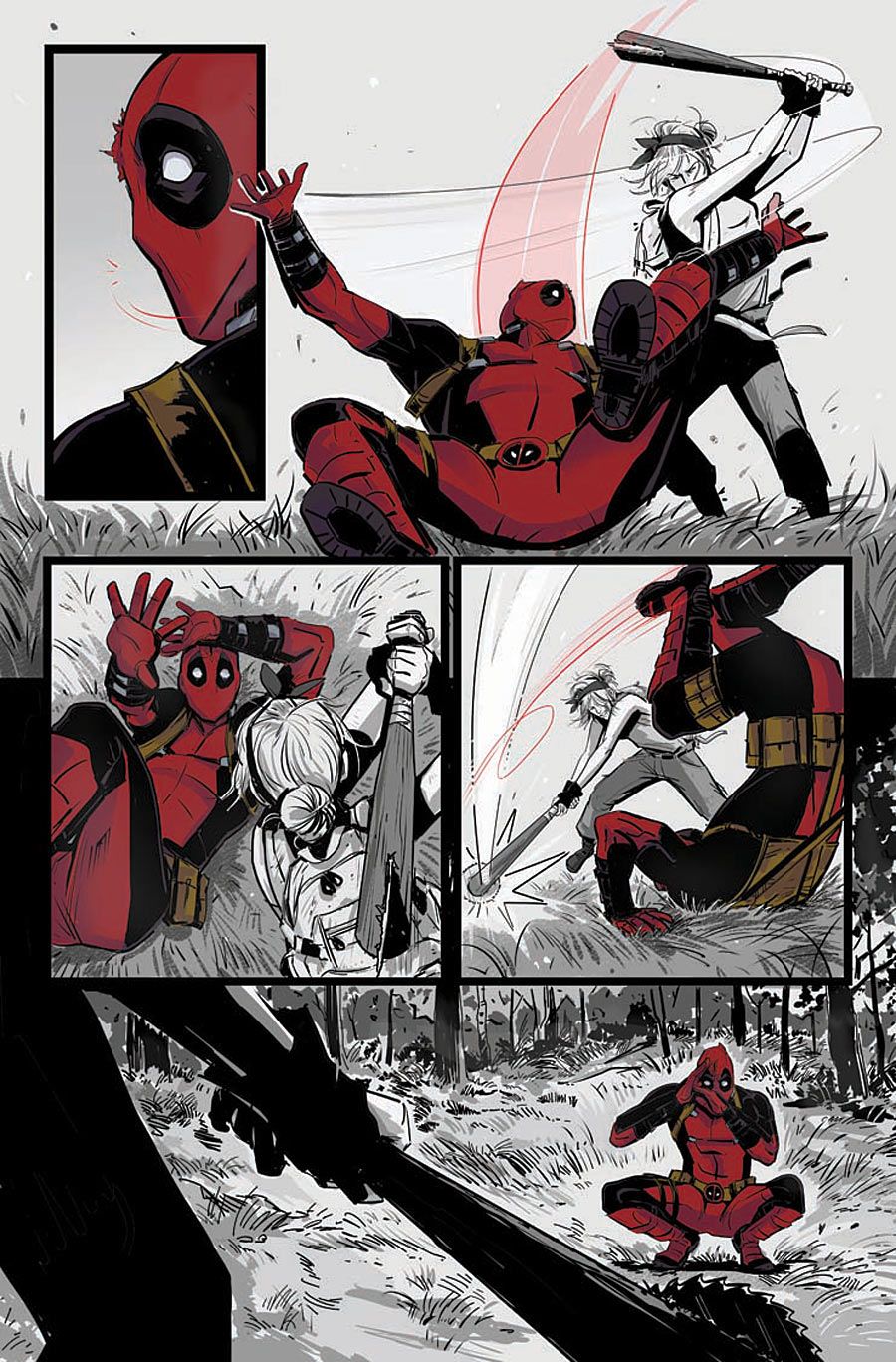Cullen Bunn has a history with Deadpool going back four years, but it was 2012's "Deadpool Kills the Marvel Universe" that truly solidified the "Sixth Gun" co-creator's association with the Merc with a Mouth. In that miniseries, as the title certainly suggests, an alternate take on Deadpool murdered a plethora of familiar Marvel faces, in a thoroughly outside of main Marvel Universe continuity story that sparked many more from the writer.
After positioning Deadpool against literary characters and multiple versions of himself, "Night of the Living Deadpool," released earlier this year, saw Deadpool take on a zombie invasion. On Saturday at New York Comic Con, Marvel announced a sequel to that tale titled "Return of the Living Deadpool," a four-issue miniseries written by Bunn and illustrated by Nik Virella (with covers by Jay Shaw), that still sees plenty of zombies -- but also hordes of Deadpools, as any zombie that eats Deadpool then transforms into another Deadpool.
CBR News spoke with Bunn about "Return of the Living Deadpool," working with Virella for the first time, his wide-ranging current slate of books and the enduring appeal of writing Wade Wilson in a variety of far-fetched situations.
CBR News: Cullen, "Return of the Living Deadpool" is your latest Marvel project, but it's striking how many different comics are coming out these days with our name on them, from a variety of publishers. People have talked a lot about how many comics Charles Soule writes each month, but I think you're right there with him -- and possibly have surpassed him at this point.
Cullen Bunn: I don't know -- maybe. I think we might be pretty close to one another. Maybe not in the number of books announced; you will announce books, and some of them have been written for a while. Like "Wolf Moon" for instance, the one I'm doing with Vertigo, that's been done for a long time. On books we're currently working on, I think we're pretty close. [Laughs]
And it's striking how different these books you're working on are, between some of the more off-the-wall Deadpool material like this new series, creator-owned work at Oni Press, all-ages fare like "Terrible Lizard," then something very serious like "Magneto"t and then a curveball like "Army of Darkness" at Dynamite. Is this a pretty creatively fulfilling time for you right now in your career?
It's nice. What's funny about it is, a few months ago I sat down and was trying to decide what kind of writer I am. I told myself, "Well, I'm a horror writer." I write horror stories. That's what I like doing, that's where I think I'm the strongest. But then I looked at some of these other things that I'm working on, like "Terrible Lizard," which is very near and dear to my heart -- it's not a horror story in any way, shape or form.
I think I still lean more towards the darker stuff, but it is nice to write some of these lighthearted, all-ages books, and things like that. It's nice to take a break and flex those muscles a little bit.
Bunn Promises "New Take on the Zombie Apocalypse" in "Night of the Living Deadpool"
You've definitely gotten a chance to show your range -- something that looks to be continuing in this new Marvel announcement, "Return of the Living Deadpool." I remember talking with you a year ago about "Night of the Living Deadpool" -- did you always have an idea to do a sequel? Is that how you structured the story?
Whenever I work on a story, no matter if it's a limited series or even a one-shot, I tend to start imagining and daydreaming what would happen if we take that story further, and where would that story go, and what does the world look like where that story's taking place. When I was writing "Night of the Living Deadpool," there was never a sequel intended, but it was something that I always had in mind. "What would happen if we take this story as a whole, and then do a sequel to it?" Where could we explore the world, where could we explore these characters, and where could we turn some of the concepts we introduced on their ear?
It's something I just tend to do -- I tend to think "what's next?" for these stories, whether or not there's any chance of that happening, I still think that way. I was not expecting to do a sequel to "Night of the Living Deadpool," but I actually did an interview somewhere, and someone asked me, "Would you consider doing a sequel to this story?" And of course I said, "Yeah, I'd love to." Any my editor read the interview, and called me and said, "Do you really want to do a sequel to it? Let's get to it." It all just kind of fell into place from there.
And you could conceivably keep going from this point! "Dawn of the Deadpool," "Day of the Deadpool," "Land of the Deadpool."
You could! And the interesting thing with this is, it definitely takes the story in a direction I don't think people are expecting. It is a different kind of story than "Night of the Living Deadpool." There are similarities in tone, and it's obviously the same world, but we take that story and it's sort of a natural progression. If we take a world that had been caught up in the zombie apocalypse, and in order to stop this apocalypse, Deadpool somehow managed to turn the zombies into Deadpools, what would that world be like? It just took it in a very interesting direction, I think.
Right -- instead of hordes of zombies in this one, it's hordes of Deadpools?
There are still zombies in the story, and zombies still play a role. It takes place an undisclosed short time after "Night of the Living Deadpool." The Deadpool population has exploded. Is that a good thing or a bad thing for survivors, is the question.
You've been writing this series of Deadpool miniseries for about two years now -- are you still having fun with the character? The books definitely seem to have performed well for Marvel, and it seems like a mutually beneficial relationship.
Yeah! Just a few days ago, someone sent me a review they did of "Deadpool Kills the Marvel Universe," and I was shocked at how long ago that review was written. To me, it feels like I wrote that story just a few months ago, because when I go to conventions, that's the book I sell out of first. That's the one that many Deadpool fans bring to me.
What really surprises me, I get told so often that book is the first comic -- not just the first Deadpool comic, but the first comic -- that someone has read. Which I think is a kind of strange introduction to the world of comic books, but I'm happy that they found us, and it turned them on to the hobby.
Deadpool is a character who has a life outside of comic book readers -- even if people are just peripherally aware of him, they tend to think he's cool, though they may not have read a comic with him in it. it's good to hear the character is actually drawing people in to reading comics.
Yeah. Like you said, Deadpool himself is an icon outside of comic books. Someone looking to read a Deadpool story, they see that Deadpool's going to kill characters that they've seen in the movies -- even if they've never read a comic, they know who Spider-Man is, they know how the Avengers are. Maybe that's what they want to see! That's great.
When I did that book, I never expected it to have the longevity that it had. Nor did I expect it to turn into doing these other Deadpool projects. I'm stoked that it did.
With these Deadpool series, you definitely appear to have unique creative freedom, because it's not taking place in mainline continuity, and thus the restrictions are quite a bit looser and you can do some crazy things. Is that still a big part of the draw for you on these books?
There are stories you can tell with Deadpool that you can't get away with with other characters. There is no other character that the reader would buy the concept that he ate so many chimichangas that he went into a food coma and missed the zombie apocalypse happening. With Deadpool? "OK, I buy it." He sort of occupies this space that's a little bit cartoon character, a little bit comic character, a little bit brutal mercenary -- it's sort of the sweet spot you can tell almost any kind of story with.
X-POSITION: Bunn on "Magneto" & "Night of the Living Deadpool"
On this series, you're working with artist Nik Viarella, a newer name to Marvel. Not sure how deep into it you are, but how has that collaboration been thus far?
She's deep into the first issue. I'm going to be honest: When we started talking this project, my editor said, "Ramon Rosanas cannot do this book. He has other commitments right now." I was a little disappointed, because I really loved what he did with "Night of the Living Deadpool." I was very wary of going into this with another artist. And we're doing some of the same tropes; the black-and-white comic with Deadpool being in color, things like that are still a key part of the story. And just like we did in "Night of the Living Deadpool," we're doing things where the color is important, and will change over the course of the book.
Knowing the visuals on it were very important to me, I was wary. But as soon as she started turning in pages, that went right out the window. I think this book looks amazing. I think people who loved the look of the first series will love the look of this series, but it's its own style. It's different, but just as great.
[Ramon's] awesome, but Nik is awesome, too. She has just wowed me with every page that she's turned in.
"Return of the Living Deadpool" is scheduled to rise in early 2015.

